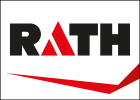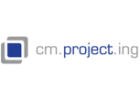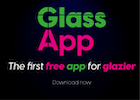Imagination and creativity are critical skills that enable architects to create beautiful, vibrant and sustainable buildings. However, one aspect of successful projects that often goes under the radar is the glass specification. From project conception to completion, specifications provide a necessary “check and balance” to ensure that the proper products are being used and that current industry standards are being followed.
Writing accurate, detailed and up-to-date glass specifications is an indispensable part of the process. With the sheer level of detail required in these instructions – from precise performance criteria such as glass characteristics and thermal and optical properties, to surface orientation for low-e coatings in an insulating glass unit (IGU) – architects must be diligent in making sure their specifications convey all the information that downstream suppliers need to successfully execute their responsibilities on a project. Considerations include:
Are the most critical specs for your project properly addressed and highlighted sufficiently to inform relevant parties throughout the supply chain?
Do generic specifications (e.g., general guidelines for glazing) reflect the most current language and standards?
Is the glazing product written into the glass specification still manufactured by the supplier?
Does the glass product specified for the project meet or exceed the related ASTM standard?
What process is in place to ensure that changes to the specs are properly communicated?
Among the hundreds of potential variables in a glass specification, questions such as these reinforce the need for architects to thoroughly vet glass specifications for each project to ensure that the end result meets the expectations of all stakeholders.
Common Specification Issues
All parties in the glass supply chain rely on accurate, up-to-date glass specifications to complete their portion of a project. Each also is responsible for reviewing those specifications for any deviations from industry standards, special requirements or specific architect requests.
Although the vast majority of glass specifications are fulfilled without issue, occasional errors occur, with consequences ranging from a developer who is dissatisfied with the appearance of the constructed building to the replacement of all the glass on a project because a performance specification was missed.
Here are some common practices that result in faulty specifications:
Copied and pasted specs. Copying and pasting information from similar projects can be a time-saver; but using this shortcut in specification writing can result in references to incorrect products and documents that have been decommissioned. Even though specifications contain standard, generic language, it’s critical to review that language for each project, as glass specs and building codes occasionally change.
Outdated standard and test method references. Referencing obsolete standards and test methods can yield additional costs or installations that aren’t up to code. In addition, customers can receive inferior products or products that don’t meet current standards. Be aware of industry performance standards that have been updated or withdrawn, and double-check that any standard referenced in a specification reflects the most current version.
Incorrect products. This issue manifests itself in several ways, including specifying an erroneous or discontinued product for a specific application, or referencing a product brand that doesn’t correspond to the specified manufacturer. Don’t “over-specify.” For instance, specifying a tempered glass might not be needed to meet code. Also make sure that treatments such as low-e coatings, opacifiers and frits are appropriate for the surfaces in IGUs and spandrels.
Other safeguards to avoid inaccurate specifications include:
Verifying that Master Format numbers are current
Confirming that referenced companies and suppliers are still in business
Ensuring there are no contradictory requirements between different sections of the spec document
Making sure that the correct performance requirements are attributed to the specified products; and
Providing accurate information about the composition of the product being specified.
Valuable Resources
Several major trade organizations have developed publications or provide guidance that architects can – and should – reference to ensure that the specifications comply with the latest industry standards. These organizations include:
Glass Association of North America (GANA), now combined with the National Glass Association (NGA), serves the architectural glass and metals industry, including glazing contractors, full-service glass companies, glass fabricators, primary glass manufacturers and suppliers to the industry. GANA produces the GANA Glazing Manual, a comprehensive set of recommendations and guidelines for all aspects of glazing applications and methods. The information was developed, vetted and approved by committees representing glass suppliers, fabricators, glazing contractors and other trade organizations.
Insulating Glass Manufacturers Alliance (IGMA), an international standards-development association for the insulating glass industry. Alliance members include insulating glass manufacturers and suppliers of related equipment, services and materials. IGMA’s North American Glazing Guidelines for Sealed Insulating Glass Units for Commercial and Residential Use contains advisory guidelines on all aspects of IGUs, such as glass types, framing, glazing clearances, setting blocks, spacer shims, and glazing materials and systems.
American Architectural Manufacturers Association (AAMA), which represents window, door, skylight, curtain wall and storefront manufacturers for residential and commercial sectors. Comprising members from fenestration product manufacturers and their material and component suppliers, AAMA develops and updates the standards that are referenced in many national and state building codes, and participates in the annual International Code Council Code Adoptions.
American National Standards Institute (ANSI), which coordinates the U.S. private-sector, voluntary standardization system. ANSI provides a neutral forum for the development of policies on standards issues and serves as a watchdog for standards development and conformity assessment programs and processes for hundreds of industries. The ANSI Z97.1 standard establishes the specifications and methods of testing for the safety properties of safety glazing materials used for all building and architectural purposes. This standard is an important element in architectural specifications for safety glazing compliance.
American Society for Testing and Materials (ASTM), which develops and delivers voluntary consensus standards. Through more than 140 technical standards-writing committees, ASTM provides recommendations and specifications for a broad range of industries, including architectural glasses used in building construction.
National Fenestration Rating Council (NFRC), an independent, non-profit organization that establishes window, door and skylight energy performance ratings.
Help from Vitro Glass
A complement to these industry resources is Vitro Glass’ “Construct” tool, which lets architects search, construct and compare virtual configurations for monolithic glazings, multi-pane IGUs, and decorative and spandrel glasses. Three-part specifications in the Construction Specifications Institute (CSI) format can be quickly generated for any configuration created in “Construct,” as long as it contains 100-percent Vitro Glass products. This 3-part specification is presented in a generic format that requires some minimal input to make it a complete architectural specification.
The 3-part CSI specification lists performance data for individual glazing configurations such as glass thickness, visible light transmittance, interior and exterior reflectance, winter nighttime u-value, solar heat gain coefficient and light-to-solar gain ratio.
Summary
One of the keys to a successful building project – one that achieves the look architects envisioned when they designed and spec’d the job – involves the development of and adherence to accurate specifications.
Although architects set the tone for building projects, every other element in the supply chain, including the glazing contractor, fabricator and raw materials suppliers, is responsible for providing their selected component in compliance with the final glass specification. Each party also benefits from ensuring that those specs are accurate, thorough and reflect the most current industry standards.
Numerous resources, such as GANA/NGA, IGMA and AAMA, supply industry best practices, recommendations and specifications that should be referenced to enable the development of accurate glass specs. Each of these organizations comprises experienced professionals, who serve as “voices of the industry” to develop the recommendations and best practices for the architectural glass trade.

























